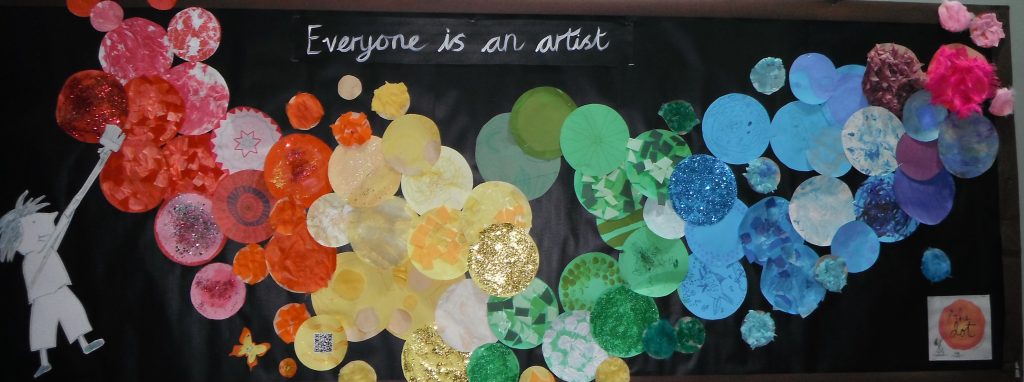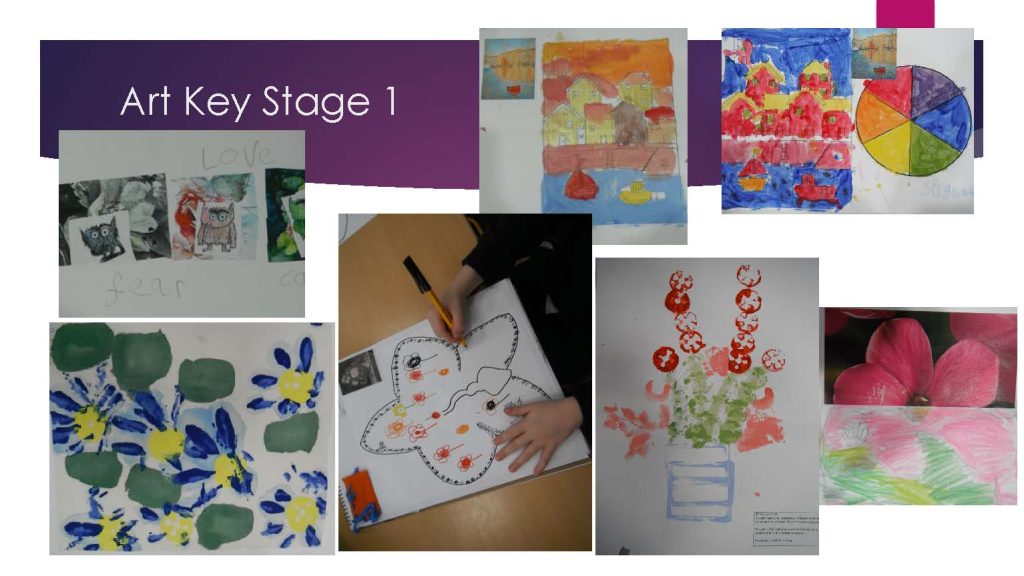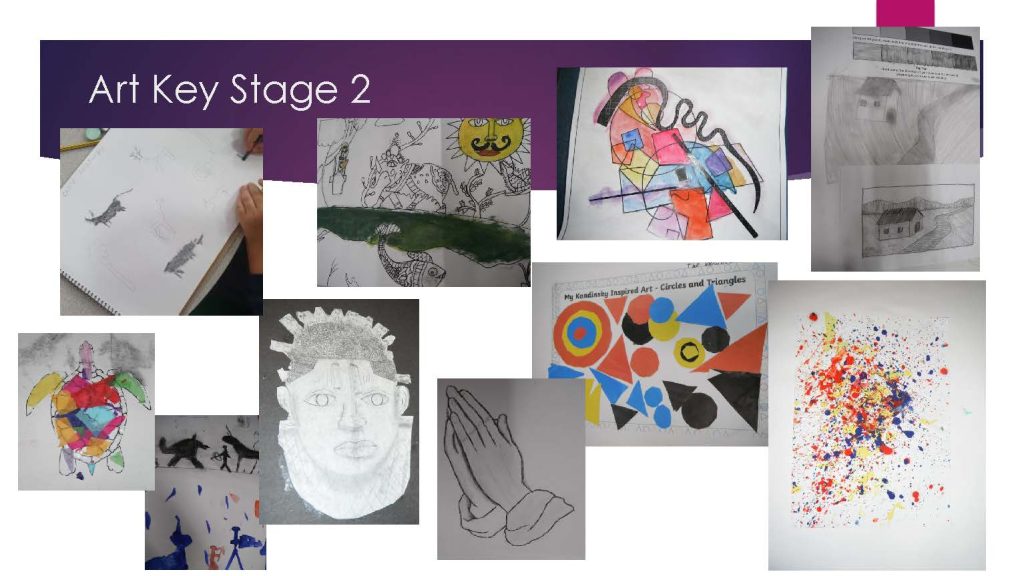ART
INTENT
At Smallthorne Primary Academy, our Art & Design curriculum celebrates creativity, imagination and expression. We believe art is central to developing confident, reflective, culturally aware young people. Every child is entitled to experience high-quality art provision that enriches their personal development and cultural capital.
Our curriculum is built around the National Curriculum and shaped through AccessArt, a research-informed, holistic approach that values exploration, enquiry and the development of creative thinking. We aim for children to engage deeply with art, learning through art as well as about art.
Our Art & Design curriculum ensures pupils:
- Develop curiosity, imagination and visual literacy
- Become confident in drawing, painting, sculpture and mixed media
- Use sketchbooks to explore ideas, practise skills and review progress
- Study artists, designers and craftspeople who reflect diversity — local, national and global
- Develop technical proficiency alongside expressive freedom
- Understand how art communicates meaning, emotion and identity
- Appreciate how art has shaped culture, including Stoke-on-Trent’s pottery heritage
We ensure the curriculum is inclusive, ambitious and accessible for all learners, including those with SEND, through scaffolded techniques, adapted equipment and explicit teaching of vocabulary.
Character & Arts Alignment
Art is a core pillar of the Smallthorne Character & Arts curriculum and contributes significantly to all five strands:
- Heritage – deep study of local ceramicists such as Clarice Cliff and Josiah Wedgwood
- History – exploring how artistic styles and movements have evolved
- Performing & Expressive Arts – creativity, imagination, interpretation and expression
- Sustainability – exploring environmentally responsible art practices, including material reuse
- Enterprise – awareness of creative industries, portfolio development and artistic careers
Through Art & Design, pupils discover the richness of human creativity while developing their own sense of identity and voice.
IMPLEMENTATION
Our curriculum is structured to ensure progression, depth and high engagement across EYFS, KS1 and KS2. Learning is organised through half-termly units that balance exploration with skill development. Art is taught in alternating half terms with Design & Technology to ensure sustained focus.
Curriculum Structure
Our approach is based on the AccessArt principles of:
- Exploration before final outcomes
- Repetition and revisiting to strengthen memory
- Balanced opportunities for individual, collaborative and community-based work
- A rhythm of quiet, reflective activities alongside dynamic creative experiences
Across the school, pupils study a broad range of artists, designers and craftspeople, ensuring diversity and representation.
EYFS
Art is embedded within continuous provision and enhanced activities that allow children to:
- Explore a wide variety of tools, textures, colours and materials
- Develop fine motor control essential for early writing
- Use materials to express ideas and stories
- Build early creative confidence
EYFS learning is structured through seven exploratory themes, supporting early artistic development and imagination.
KS1 & KS2
Teaching is based on progressive sequences that enable children to:
- Develop secure drawing, painting and sculpting skills
- Use sketchbooks to collect observations, practise techniques and refine ideas
- Analyse and discuss artwork using accurate vocabulary
- Experiment with mixed media, form, pattern, colour and composition
- Build increasingly independent creative identities
Cross-Curricular and Local Context
Art is strongly connected to wider curriculum themes and the local community:
- Every class completes at least one Local Heritage Unit linked to the Potteries
- Art enriches History, Geography, English and Character Education
- School displays celebrate creativity and showcase high-quality outcomes
Assessment
Assessment is ongoing and meaningful, based on:
- Sketchbook development
- Pupil dialogue about artistic choices
- Observation of technique and skill
- Final pieces that demonstrate cumulative learning
- Use of vocabulary and ability to explain artistic intention
IMPACT
By the end of each phase, pupils will:
- Be confident, reflective artists who value creativity
- Demonstrate technical proficiency in key art disciplines
- Use sketchbooks as working tools for thinking, exploring and improving
- Show understanding of artistic processes, influences and styles
- Appreciate the significance of art in culture, history and identity
- Recognise the importance of Stoke-on-Trent’s artistic heritage
- Explain their work using accurate, appropriate vocabulary
We measure impact through:
- Sketchbook scrutiny
- Monitoring of teaching practice
- Review of final outcomes
- Pupil voice to evidence engagement, understanding and enjoyment
- Assessment of skill progression
Ultimately, our Art & Design curriculum enables pupils to think creatively, appreciate beauty, express themselves and engage with the world as thoughtful, culturally aware young citizens.




